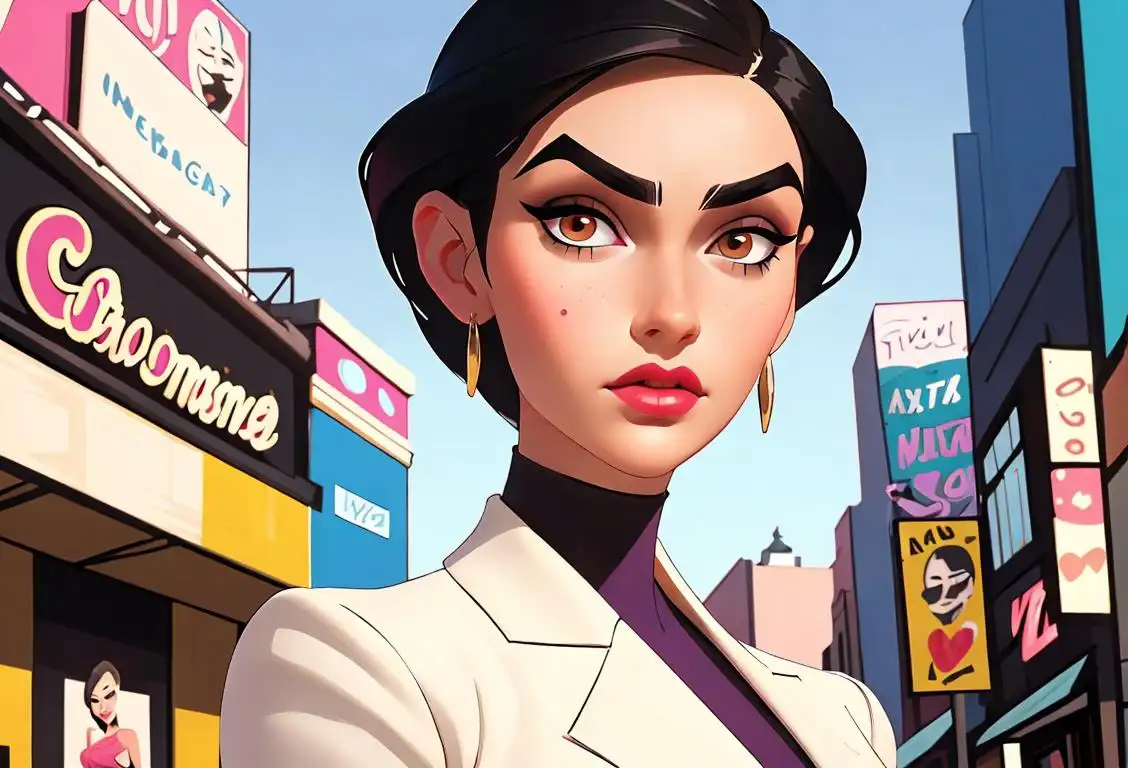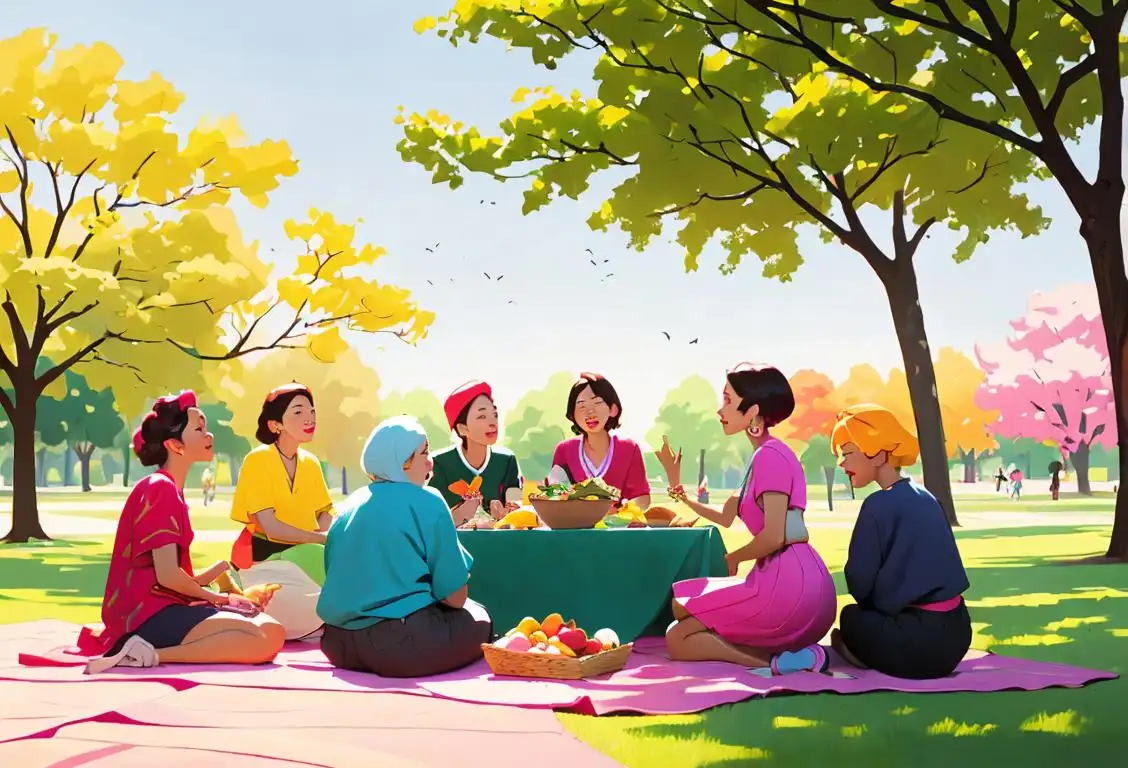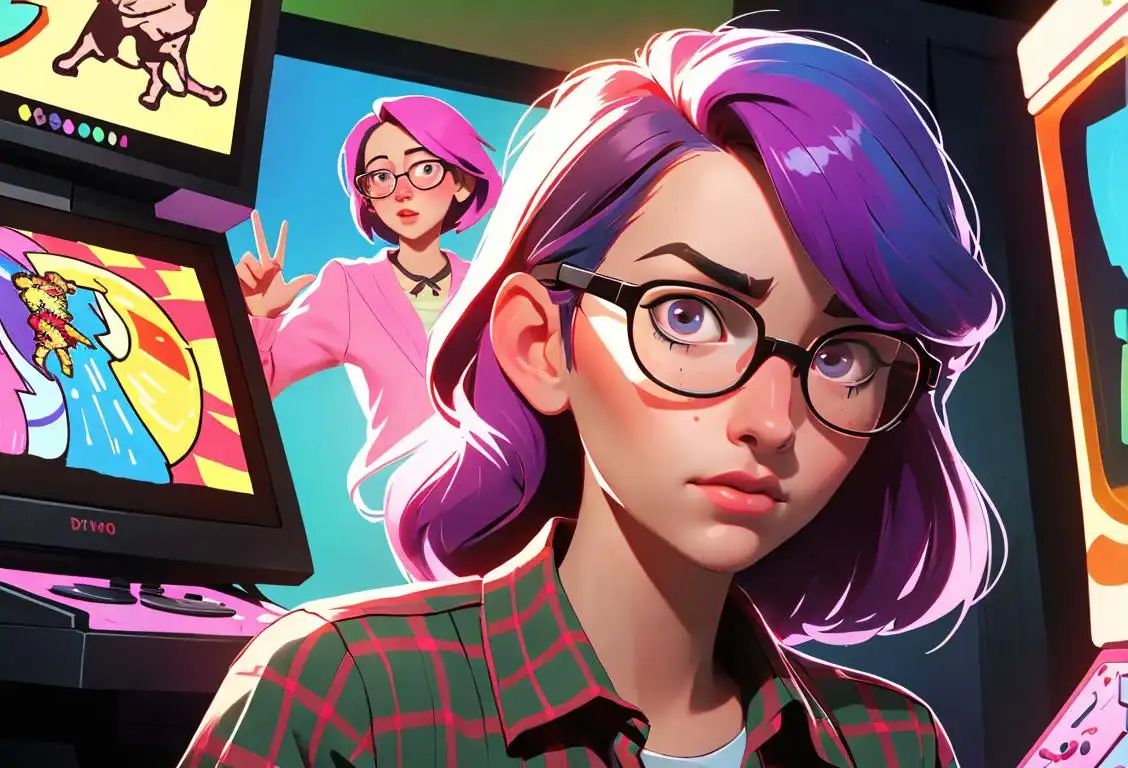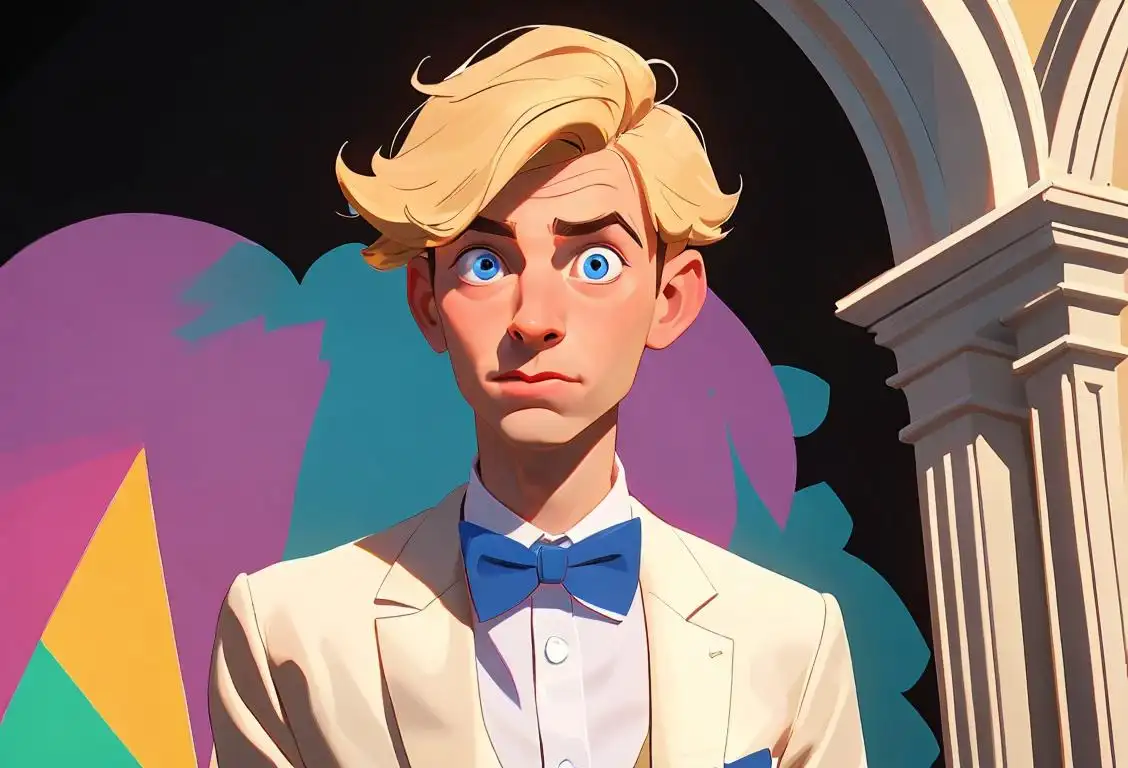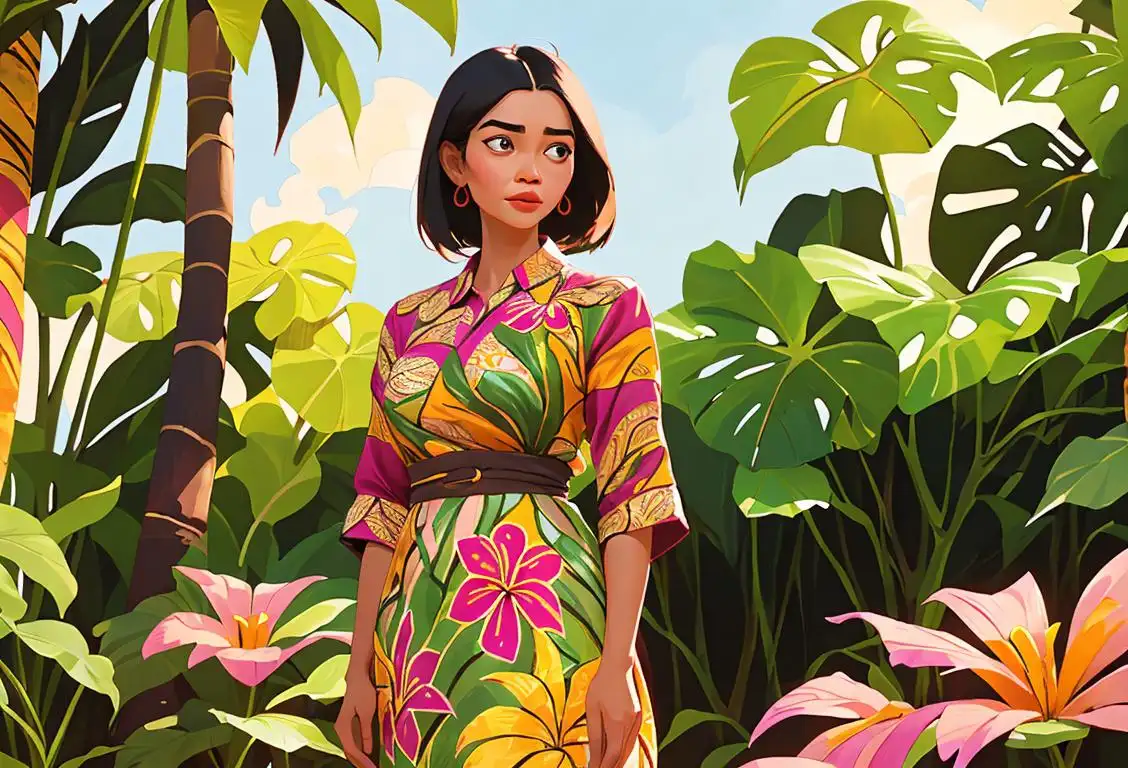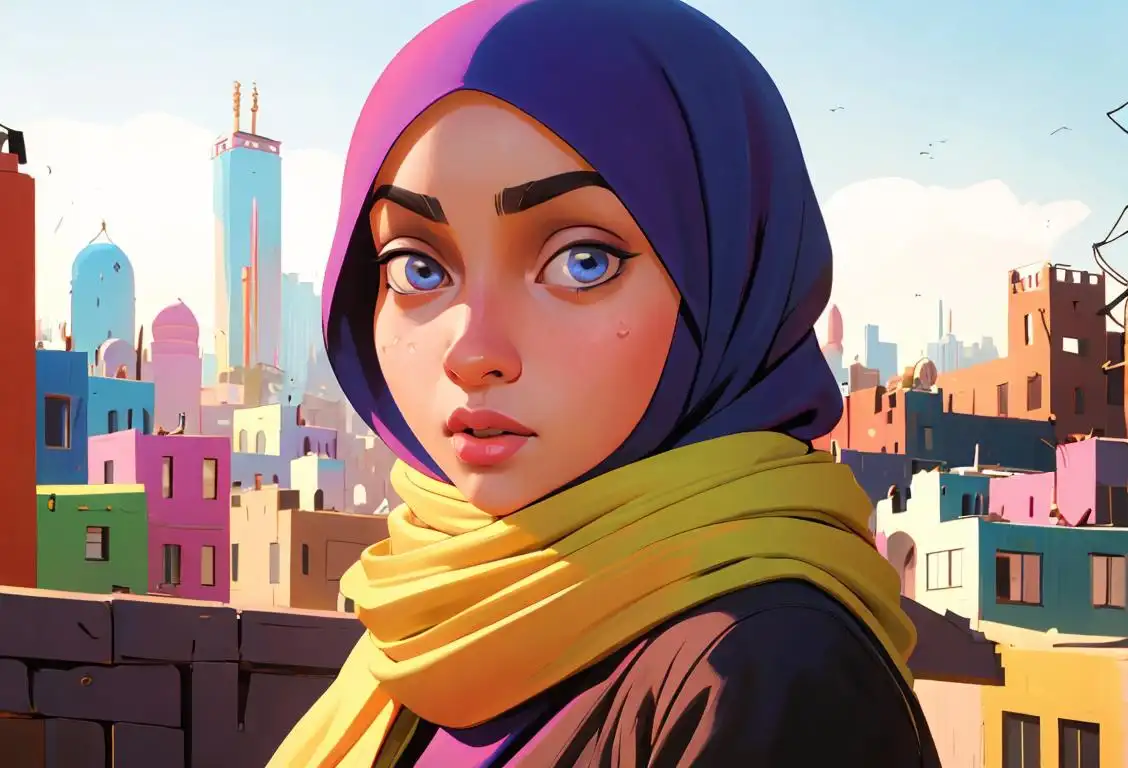National Mohawk Day
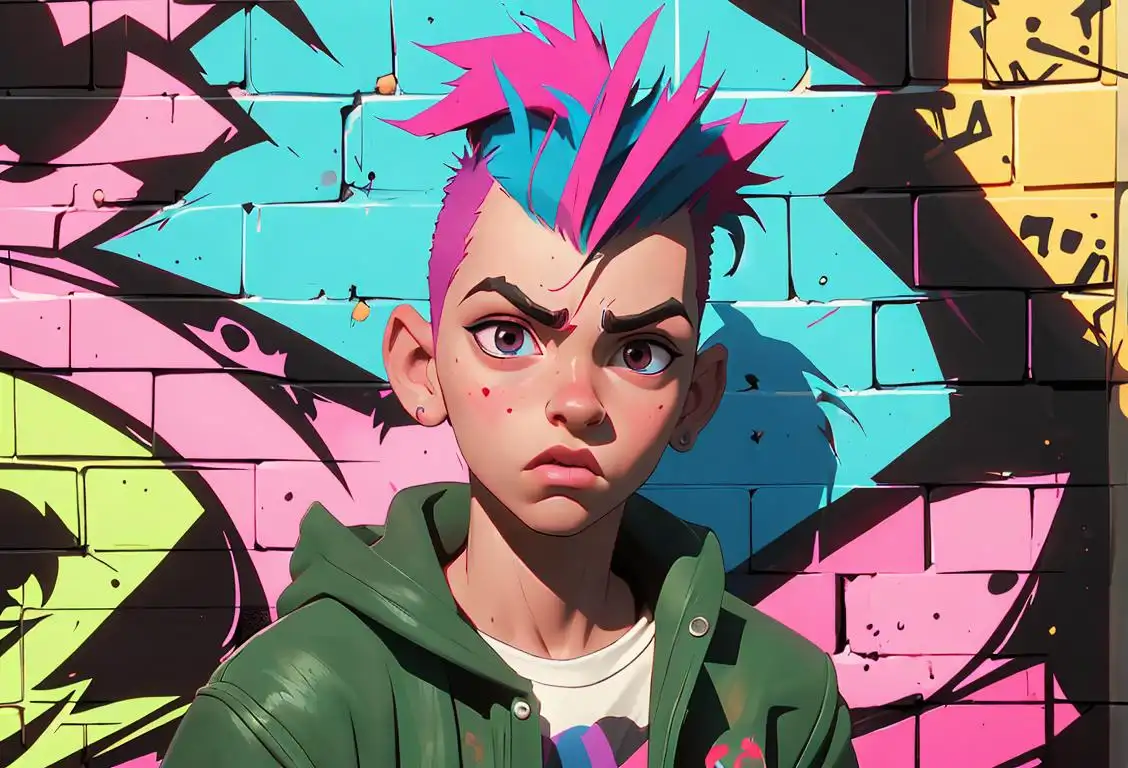
Ah, National Mohawk Day! The day when we celebrate those iconic, slightly rebellious hairstyles that make you stand out from the crowd like a peacock in a sea of pigeons. So, grab your hairspray, dust off your comb, and get ready for some serious punk rock vibes!
When is Mohawk Day?
It's national mohawk day on the 30th March.
The Birth of a Style Revolution
Mohawks have a long and storied history. And no, we're not just talking about their association with punk rockers and rebellious teenagers. The origin of the mohawk hairstyle has roots that date back centuries, believe it or not.
It all started with the indigenous peoples of the Americas. Native American tribes, such as the Mohawk Nation, often adorned themselves with unique and striking hairstyles. The mohawk, or its traditional name "kanen'tó:kon," was a symbol of strength, bravery, and individuality.
Fast forward to the 1970s, when the mohawk truly exploded onto the mainstream scene. Punk rockers, like the iconic bands The Sex Pistols and The Ramones, embraced the mohawk as a symbol of their rebellious attitude and non-conformist spirit. Suddenly, people all over the world were ditching their conventional hairstyles and sporting razor-sharp spikes.
The Cyber Celebration
Thanks to the power of the internet, National Mohawk Day has taken on a whole new meaning. What started as a niche trend has now become a global celebration of individuality and self-expression.
Social media platforms are flooded with people proudly showcasing their mohawks on this special day. From brightly dyed punk mohawks to subtle and stylish variations, the creativity knows no bounds. It's an explosion of hair-raising fabulousness!
So why not join in the fun? Whether you're a seasoned mohawk veteran or curious to try out the style for the first time, National Mohawk Day is the perfect opportunity to let your hair down and rock that edgy look.
History behind the term 'Mohawk'
1500s
Origins in Native American Culture
The term 'mohawk' finds its roots in the indigenous culture of North America. The Mohawk people, one of the six nations of the Iroquois Confederacy, inhabited the northeastern region of the United States and the southern part of the Canadian province of Ontario. Their distinctive hairstyle, characterized by a shaved head with a narrow strip of hair left at the center, became widely known as the 'mohawk' and gained prominence among indigenous tribes.
1769
First recorded usage
The term 'mohawk' was first recorded in 1769 by a Dutch cartographer named John Montresor. Montresor used the term to describe a tribe of Native Americans, known as the Kanien'kehá:ka, who inhabited the Mohawk Valley in present-day New York State.
1675
The Mohawk tribe and their distinctive hairstyle
The term 'mohawk' originated from the name of the Mohawk tribe, a Native American tribe belonging to the Iroquois Confederacy. The Mohawk people were known for their fierce warrior skills and distinctive hairstyle, which involved shaving the sides of their heads and leaving a narrow strip of hair in the center, often referred to as a 'scalp lock.' This unique hairstyle was a symbol of their tribal identity and a way to intimidate their enemies.
1930s
The emerging popularity of the mohawk hairstyle
In the 1930s, the mohawk hairstyle gained attention in mainstream culture. Initially, it was associated with the rebellious subculture of the British Teddy Boys, who were known for their bold fashion choices and defiance of societal norms. The mohawk became a symbol of non-conformity and individuality, as it represented a departure from traditional hairstyles.
1770s
Adoption by British Soldiers
During the American Revolutionary War, the British Army formed alliances with various Native American tribes, including the Mohawk people. British soldiers, inspired by the distinctive hairstyle of the Mohawk warriors, began adopting the 'mohawk' style as a symbol of solidarity and a tribute to the indigenous communities fighting alongside them.
1776
American Revolution brings prominence
During the American Revolution, the Mohawk people gained prominence for their allegiance to the British Crown. Many Mohawks fought alongside the British against the American colonists, earning a fearsome reputation as skilled warriors. This heightened the awareness and interest in their culture and identity, including their distinctive hairstyles.
1970s
Punk movement and the mohawk
The mohawk hairstyle truly gained worldwide recognition during the punk movement of the 1970s. Punk rockers embraced the mohawk as a symbol of their anti-establishment ideology and rebellious nature. The style was often accompanied by vibrant hair colors, shaved sides, and spikes. It became an iconic look associated with punk culture, representing both unconventional fashion and a form of self-expression.
1970s
Rise of Punk Subculture
In the 1970s, the term 'mohawk' gained mainstream popularity due to its association with the punk subculture. Punk rockers, known for their rebellious and non-conformist attitudes, embraced the mohawk hairstyle as a bold statement against societal norms. This cultural phenomenon catapulted the term 'mohawk' into broader public awareness, making it synonymous with individuality and counterculture.
1890s
The revival of the Mohawk hairstyle
In the late 1890s, a hairstyle resembling that of the Mohawk people gained popularity among certain subcultures. Inspired by the Native American warriors' shaved sides and a central strip of hair, individuals began sporting the 'Mohawk' or 'Mohican' hairstyle as a symbol of rebellion and individuality. This revived interest in the term and further popularized its usage beyond its cultural context.
1990s
Mohawk Warriors and Indigenous Activism
In the 1990s, the term 'mohawk' took on a new dimension with the emergence of Mohawk Warriors, a group of Indigenous activists involved in land disputes and protests in Canada and the United States. These activists reclaimed the term 'mohawk' as a symbol of resistance and pride, using it to unite Indigenous communities and raise awareness about their rights, culture, and sovereignty.
1970s
Punk subculture adoption
In the 1970s, the 'Mohawk' hairstyle experienced a resurgence, particularly within the punk subculture. Punk musicians and enthusiasts in the United States and the United Kingdom embraced the edgy and unconventional look, using it as a form of self-expression and defiance against societal norms. The Mohawk became synonymous with rebellion and nonconformity.
1990s
Mainstream adoption and variations
During the 1990s, the mohawk hairstyle gradually transitioned from a niche punk symbol to a mainstream trend. It found popularity not only among rebellious youth but also within fashion and entertainment industries. People began experimenting with variations of the mohawk, such as fauxhawks (where the hair is styled to resemble a mohawk without shaving the sides) and subtle adaptations that made the style more wearable for a wider audience.
Present
Continued cultural impact
Today, the mohawk hairstyle continues to make a statement and has become a symbol of creativity, individuality, and counterculture. It has transcended its origins and has been adopted by various communities and subcultures worldwide. From musicians to athletes, the mohawk remains an iconic and versatile hairstyle that allows individuals to express their unique style and challenge societal norms.
Present Day
Cultural Icon and Hairstyle
Today, the term 'mohawk' has evolved from a hairstyle in Native American culture to a multifaceted symbol. It represents various aspects such as Native American heritage, punk subculture, Indigenous activism, and personal expression. The mohawk continues to be one of the most recognizable and enduring hairstyles, widely recognized across different cultures and subcultures.
Today
Beyond hairstyles
While the term 'Mohawk' originated from the Native American tribe, its modern-day usage extends beyond the context of hairstyles. It has become an internationally recognized term, often used to describe various cultural references, such as the Mohawk language, traditional arts and crafts, and elements of Mohawk culture. The term has evolved to symbolize resilience, strength, and the rich heritage of the Kanien'kehá:ka people.
Did you know?
Did you know that the tallest mohawk ever recorded measured a whopping 3 feet 8.6 inches? It was achieved by Kazuhiro Watanabe from Japan in 2011. Talk about reaching new heights!Tagged
fun fashion self-expressionFirst identified
30th March 2016Most mentioned on
30th March 2016Total mentions
4Other days
Fleek Day
Wear Your Own Clothes Day
Dress Like A Hoe Day
Mohawk Day
Egirl Day
Bow Tie Day
Ugly Christmas Sweater Day
Batik Day
Dress Like Your Inner Hoe Day
Hijab Day
